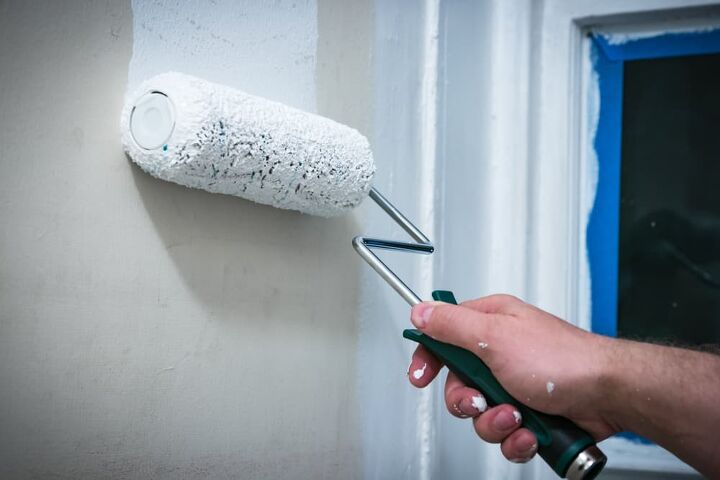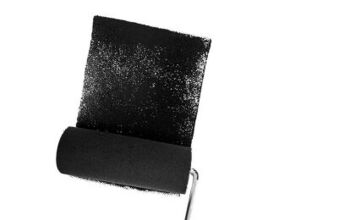Zinsser Vs. Kilz Paint Primer: Which One Is Better?

Before almost any paint project you can imagine, you will need to add a layer of primer to the mix. Primer is the very foundation of your surface’s ability to grip paint, which is why so many people rely on quality primer brands like Zinsser and Kilz. Both are great brands, but which is better for your project? And moreover, can the best brand pick change according to the project you have?
Both primer brands have loyal fans, and rightfully so. However, anecdotal evidence suggests that Zinsser is the better brand of the two for the vast majority of projects. If you need a thinner, more spreadable option, Kilz can still be a great pick.
Before you start heading over to your local Home Depot, it’s good to know what you should expect out of your primer. This guide will explain why you probably are going to prefer Zinsser by parsing out every aspect of the brands.
Do You Need to Hire a Paint Contractor?
Get free, zero-commitment quotes from pro contractors near you.

What Should You Look For In A Paint Primer?
Both Zinsser and Kilz offer up a way to get a smoother surface that will take to paint better and also give you a brighter color. However, when you’re looking for a good primer, it’s best to keep an eye out for several major factors. To make things easier, we’re parsing our review out into the following categories:
- Variety
- Price
- Consistency
- Adhesion
- Convenience/Odor
- Durability
Variety
When it comes to variety, both Zinsser and Kilz are fairly evenly-matched. They both have primers that work for a wide range of different primers featuring both oil and water bases. If you are looking for generic primers, they have them. The same goes for indoor/outdoor primers, as well as wood primers.
Verdict: Both are remarkably well-equipped to give you a product that can work with your project, whatever that project may be.
Price
If you’re looking for a bargain, then Kilz is going to be your brand of choice. Most Kilz products will be between $8 to $42 per gallon. Meanwhile, Zinsser primers start at $10 per quart. This makes Zinsser far pricier than Kilz in many situations. However, the actual price comparisons will vary from primer to primer.
Verdict: Kilz is the more affordable one, by far.
Consistency
Most people have a certain preference when it comes to consistency, especially when it comes to painting a room. Users have noted that a thicker consistency tends to do better with most projects. Keeping that in mind, here’s what you need to be aware of when you’re picking between these two primer brands:
- When you compare similar offerings from each brand, Zinsser tends to have the thicker consistency across the board. This is great if you want to have a thick, sturdy coat that grips paint well. This is one of the top reasons why you might want to get this brand, period.
- If you prefer easy to stir, thinner primer, then your best bet is Kilz. Kilz, with its thinner primers, is easier to spread and stir. This makes it a little easier for newbies to wield.
- Kilz is noted for having a better bleed through across the board. Depending on what project you are working on, this can be a good thing or a bad thing.
- Due to the thinner consistency, Kilz is often accused of having shoddy coverage. When most people think of coverage, they think of a thicker consistency. This is one of the top reasons why Kilz has a less-than-stellar rep among some DIY fans.
- Zinsser is famous for being capable of occasionally reducing the number of layers you need due to its thick consistency. This doesn’t always hold up, but it still sometimes does. Due to Zinsser’s thickness, you sometimes can get away with one layer rather than two.
Verdict: Unless you need a product that has a high level of bleed through, you will be better served using Zinsser primer. Its thick consistency offers better coverage and may even help you cut down on extra layers.
Adhesion
For many professional painters, the ability of a primer to adhere to a surface is the number one trait they look for. It makes sense, since having a primer with mediocre adherence can force you to spend extra time sanding down the surface. Here’s what you need to be aware of when you’re comparing the two brands:
- Zinsser is known for having remarkably good adhesion, even when compared to more expensive brands. It’s true, and it’s one of the reasons why professional painters tend to swear by this brand.
- There are many stories on the net about using Zinsser specifically because it allows you to apply the primer without any need to sand the surface. This is particularly true when it comes to Zinsser’s Bulls Eye 1-2-3 Primer. That one was actually designed to be sanding-free.
- Kilz’s top primer, their Premium Primer, still requires sanding on all surfaces. This leads to more prep time, which in turn, can infuriate some DIYers.
- Regardless of which brand you choose, common sense still applies. No primer will properly adhere to a surface that isn’t cleaned. If your surface is greasy, dusty, or moldy, don’t blame the primer for your bad paint job!
Verdict: The most commonly-cited reason why Zinsser is so popular deals with its adhesive qualities. It’s a clear winner in this round.
Convenience/Odor
Obviously, you can get both Zinsser and Kilz at any major hardware store without much issue. That’s not what we mean about convenience, though. We’re talking about the overall experience of using this primer indoors and out. Here’s what you need to be aware of when comparing these two brands:
- Both brands have indoor/outdoor primers, so you’re not limited to one or the other. If you have a need to do a lot of priming, you can use one of their indoor/outdoor brands to save a bunch of money.
- The water-based primers from both brands are relatively odor-free. This is to be expected, since it’s exceedingly rare to hear about a water-based primer that smells. In this sense, both brands are tied.
- However, there’s a stark difference when it comes to the odors of each brand’s oil-based primer paint. More specifically, there are a slew of complaints online relating to Kilz’s oil-based primer and the odor it emits. It’s so strong, many construction crews refuse to use it indoors due to the stench. If you have a sensitive nose, opt for Zinsser’s oil-based paint primer instead.
- Generally speaking, Kilz will require more prep work and more layers of primer. This is just due to the consistency of the primer. Thicker primer clings better, covers better, and also tends to be less likely to need a fix. If you are worried about time, it’s important to take this issue into consideration.
- Due to the thinner consistency of Kilz products, you should expect Kilz to dry faster than Zinsser’s products. This is one of the more notable upsides of using Kilz.
Verdict: It’s pretty easy to see why people might want to avoid Kilz by now, especially if they value their noses.
Durability
Durability is not something people tend to think about when it comes to primers, but while we were researching things, it became clear it was an issue worthy of discussing. There were several forums where construction workers mentioned using primer, only to have it “scratch off” when a wall was scraped or having it fade away before the project was done.
So far, we have not seen this type of complaint with Zinsser. However, we cannot say the same about their rival, Kilz. As it turns out, there are some stories around there involving Kilz being too brittle or scratch-prone to be worth using on larger projects. That’s a major warning sign in our books!
Verdict: Yeah, it might be time to flip the killswitch on Kilz.
Which Paint Primer Brand Should You Choose?
It seems like Kilz primers have a lot of work to do if they want to play on the same field as Zinsser. Zinsser’s thick, durable coatings are known for requiring fewer coats, less prep work, and also being grippy on tougher surfaces. That alone is reason enough to trust their brand and give them a shot if you haven’t already.
Unless you have a project that requires using thin layers of primer or if you’re okay with extra prep work, you probably won’t want to use Kilz. Zinsser is just that much more versatile. With that said, any primer is better than no primer at all. So if you can’t spring for Zinsser, it’s alright to opt for Kilz.
Do You Need to Hire a Paint Contractor?
Get free, zero-commitment quotes from pro contractors near you.

Related Questions
Does primer kill mold?
When properly applied, primer can prevent mold and mildew from growing and spreading on your property. Primers can also help get rid of odors that are locked into a surface, such as the odors that are associated with urine or nicotine. To get the best results, make sure that your primer is applied on a clean, mold-free surface.
When should I use an oil-based primer?
Oil-based primers are excellent when you are going to paint wood. This is because this type of primer is able to seal the porous surface of your wood and stop wood’s tannins from leaking through the grain. Water-based paint primers do not have the chemical makeup to do that.
Can I paint over old paint?
This is generally seen as bad form, but if you are painting over a color that’s similar to the new coat of paint, there may not be any need to add a primer. However, you should always clean and prime any painted surface that does not have a hue that closely matches your new paint color.
Related Guides

Ossiana Tepfenhart is an expert writer, focusing on interior design and general home tips. Writing is her life, and it's what she does best. Her interests include art and real estate investments.
More by Ossiana Tepfenhart



























